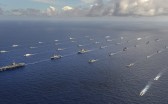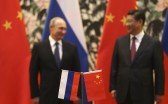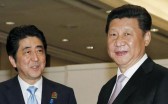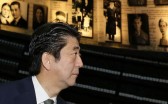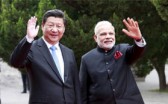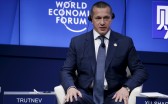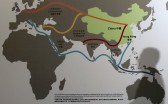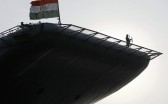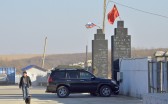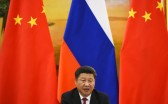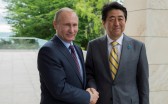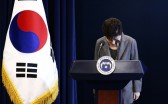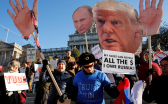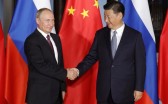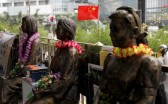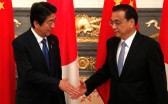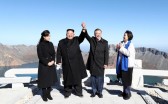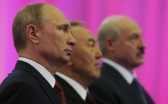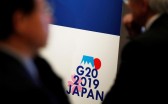This second positive scenario of possible Russo-US cooperation in Asia assesses the latest developments in bilateral relations and US anti-Russian sentiments, the regional background in the Asia-Pacific as well as Russian and US relations with ASEAN and regional organizations. This scenario responds to the negative scenario presented by Stephen Blank by touching on Russia’s Asian pivot.
Prospects for Improved Russia-US Relations
There was much hope in Russia that Donald Trump’s administration could usher in a new era of Russo-US relations, less confrontational towards Russia, which neither seek regime change nor interfere in domestic policy nor spread democracy and human rights. Trump’s policy was expected to focus on national interests under the “America first” slogan rather than expand US hegemony in the current world order. Possible recalibration of the Russia-US-China strategic triangle provided that Russo-American ties would improve amid hardened anti-Chinese rhetoric, which would prevent a Russia-China military alliance from forming. At the same time, standard foreign policy imperatives of the Republican Party such as unilateralism in international politics, skepticism towards international organizations and multilateral institutions, and propensity to use military force as a foreign policy instrument were a matter of serious concern in Russia.
Recalibrating the Russia-US-China strategic triangle after the elections, however, failed to survive a reality check. Criticisms from the Congress, the Democratic Party, and the foreign policy establishment, as well as what Russians perceive to be hysteria in the mass media about Russia’s alleged meddling in the US elections and possible Russian connections in Trump’s administration have been mounting with no sign of abating. Room for any positive agenda vis-à-vis Russia contracted significantly. The Trump administration’s foreign policy has, in many ways, returned to the mainstream with more inclination to use force and unilateralism (as witnessed in Syria and on the Korean Peninsula). US-China relations are back on track after the Trump-Xi summit in April, whereas Russia-US relations are not, with very few improvements in place, as it was hardly possible for Trump to pursue any fundamentally different positive agenda. The chances for abandoning mutual perceptions of the other as a threat to the international order have dwindled.1
The sad irony is that both sides understand very clearly that it is in their national interest to overcome the current confrontation and cooperate on issues of common interest. As seen in Russia, the impediments lie with the United States, where Trump’s actions towards Russia give rise to a new stream of accusations.2 Although there is a clear balance-of-power logic behind improving Russia-US relations, Trump never explains that.3 In the meantime, his foreign policy arouses serious concern among US allies, both in Europe and Asia, making them skeptical of US commitments.4 While shifting NATO’s focus from military-political deterrence of Russia to combatting terrorism could pave the way for Russia returning to cooperation with NATO,5 unstable relations between the United States and Europe as well as allies in Asia are unlikely to contribute to a positive image of Trump’s foreign policy strategy. This, in turn, creates the risk that any attempts to improve relations with Russia would be regarded as trustworthy. Mitigating this risk will require Russia’s proactive policy aimed at improving relations with the United States, and its European and Asian partners.
There are still chances for gradual improvement in Russia-US relations as viewed in Russia. Trump and Vladimir Putin agreed to seek a cease-fire in Syria.6 Trump’s course to improve relations with Russia based on common interests was confirmed during his first meeting with Foreign Minister Sergey Lavrov on May 10. Both sides affirmed their desire to pursue a common policy on major global problems, first and foremost terrorism, at a meeting described by Trump as “very, very good.” Trump and Putin are scheduled to meet for the first time at the G20 Summit in July.7 The main focus of the American mass media on May 10, however, was on accusations of Trump’s transfer of top-secret information to the Russian side. While Trump twitted that he had absolute authority to share the information concerning terrorism and safety of flights with his Russian counterparts to make Russia more cooperative on these issues, Putin called the allegations “political schizophrenia,” which has no connection with reality.8 The anti-Russian sentiments were described by Lavrov as reminiscent of a “witch-hunt,” making policy aimed at improving relations almost impossible.9
Prospects for improved Russo-American relations in Asia depend, to a high degree, on the ability to achieve at least selective cooperation in general. Trump’s desire to mend fences with Russia is generally positively apprehended in Russia and can gradually pave the way for at least limited cooperation and the reversal of the confrontational trend.
Russia’s Asian Pivot
Responding to Stephen Blank’s negative scenario, I should note that Russia’s Asian pivot, although incomplete and experiencing a number of major setbacks, is not all doom and gloom. It has been stimulated by the desire to reestablish Russia’s great power status. It was launched much earlier than in 2014 and is driven by goals such as to establish Russia as a major regional power and independent player, in order to link its development to the region central to world economics and politics (an argumentation similar to that of US Asia pivot) as well as to develop the regions of Siberia and the Russian Far East (RFE). The Russia-China partnership is based on a vision of a polycentric world order and opposition to unilateralism. The year 2014 saw attempts to accelerate Russia’s Asian pivot amid deteriorating relations with the United States and Europe.10 Further, the extremely unfavorable economic conditions set in motion a “perfect storm” for Russia’s attempts to diversify its economic ties after 2014.
While Russia’s trade with Asia suffered considerably in 2015 and 2016, as did investment, the decrease reflects an overall drop in energy and resource prices (the main exports to East Asia) in addition to the contracted spending capacity of the Russian population, currency volatility, and crisis trends in Russia’s economy. While trade and investment with East Asian states saw a sharp decline in 2015 (about 30%), in 2016 the trade volume remained more or less on the same level of 2015 with China, Taiwan, and India, while experiencing a further decline of 25% with Japan, and 17% with South Korea.11 As Russia’s economy is reviving, Russia-China trade is expected to rise in 2017 (already by one third in the first quarter of the year),12 as is trade with other partners such as Japan, which also saw a 25% rise in the first quarter of 2017, in what some see as a result of steps aimed at Russian-Japanese rapprochement.13
Blank is right to point out that Russia and China have intensified their relations and that there is a risk of growing dependence on China. However, the progress in Russia’s relations with Japan, ASEAN, and India should also be taken into account as demonstrating that Russia’s Asian pivot is not solely focused on China. Although economic relations remain predominantly tied to Europe, Russia’s diversification strategy has achieved a measure of success, especially in trade and energy relations.14 As Alexander Lukin argues, Russia’s Asian pivot has become a reality already as a strategic course for Russia, although it is facing challenges and has not been developing very rapidly.15
Russia-Japan rapprochement is seen with hope in Russia as leading to joint economic activity on the Kuril Islands with the proclaimed aim to sign a peace treaty (downplaying Japan’s insistence on the transfer of islands for this), as well as to develop economic cooperation, launch Japanese investment projects in Russia, and resume 2+2 political and security dialogue as a means to create a positive atmosphere, establish trust between the countries, and reverse the negative trend in bilateral relations.16
Russia and ASEAN relations have also gained momentum; the third Commemorative Summit took place in Sochi in May 2016, aiming to usher in a new stage of relations.17 The last few years have seen an increase in joint projects or plans to launch them. A major accomplishment has been the conclusion of the Eurasian Economic Union-Vietnam FTA in May 2015, Russia’s first FTA with an Asian state and the first FTA concluded by the EEU. If it proves successful, it could be followed by an EEU-ASEAN FTA alongside negotiations with Singapore, Cambodia, Thailand, and Indonesia about joint FTAs.18 Russia is absent from the production networks that make up the real process of East Asian regionalism. It has only recently joined the WTO. Russian experts consider the optimal strategy to gradually conclude FTAs with other regional partners and ASEAN and take part in projects improving connectivity in Asia. After studying the effects of its first agreements, Russia could join RCEP following the FTA with ASEAN with the FTAAP as a long-term goal.19
On the Korean Peninsula, Russia views its policy as promoting a peaceful resolution of the North Korea nuclear issue, constructing a new security architecture in the region, and reviving the Six-Party Talks. It has proposed major trilateral economic projects, including linking the Trans-Siberian railroad to the Korean railroad infrastructure and constructing power lines through North Korea to South Korea and a natural gas pipeline down the peninsula as a means to mitigate the conflict.20 Russia’s position has been close to China’s regarding condemning nuclear tests, calling for negotiations, and advocating a milder version of UN Security Council sanctions targeting North Korean nuclear and missile programs. It supported China’s “dual freeze” proposal at the UN, aimed at freezing the North Korean nuclear program in exchange for a halt to the US-South Korea joint military exercises.21
Current US and Russian strategies over the Korean issue can hardly be harmonized, and THAAD deployment is perceived by Russia in a negative light. As Artyom Lukin claims, the United States should pay more attention not to China, but to Russia as a possible player in dealing with the North Korean crisis. Russia possesses a unique diplomatic role, more or less on friendly terms with Pyongyang and less distrusted than the United States and China. Although Russia’s trade turnover with North Korea is very small (about $69 million in 2016) and investment is limited to a single Khasan-Rajin project, North Korea may feel more comfortable with it than with China. Russia is committed to the denuclearization of the Korean Peninsula without use of force as a long-term goal and agrees to a “freeze” in the short-term. Russian and US interests converge on non-proliferation.22 Georgy Toloraya states that many in Russia believe that the current crisis, during which the North Korean problem was blown out of proportion, is “a whimsical attempt to remind the world of the ability of the United States to untie global knots using merely its will and potential.” He argues that the diplomatic process can be launched as the only viable solution with a ‘moratorium for moratorium’ agenda, which should encompass a wide range of issues related to achieving comprehensive security on the Korean Peninsula, starting with direct US-North Korea talks and proceeding to a multilateral format with Russia as one of the parties.23
Russia has the potential to contribute more to the reduction of tensions on the Korean Peninsula through cooperation with South Korea President Moon Jae-in, who has promised policies or reconciliation and denuclearization through diplomatic dialogue in addition to the existing economic sanctions. Moon is expected to foster relations with major powers in order to reduce tensions in the region. Improving relations with Russia would mean seeking both the development of economic relations and Russia’s engagement in resolving the crisis on the Korean Peninsula.24 There are hints that South Korea could agree to suspension of North Korea nuclear and missile tests with a temporary halt or adjustment of US-South Korea joint military exercises, followed by talks with North Korea,25 measures undoubtedly welcomed by Russia that could pave the way for trilateral projects. On June 7, Moon suspended the deployment of the US THAAD missile defense system, while the two launchers installed during the election campaign remain in place.26 Russia’s improved relations with US allies Japan and South Korea have potential to contribute to better Russo-US relations and stability in Asia.
Possible Agenda for Russia-US Cooperation in Asia: ASEAN and Regional Organizations
Both Russia and the United States have paid considerable attention to their relations with ASEAN. The Obama administration within its Asian pivot focused not only on Northeast Asia but Southeast Asian states and ASEAN as a whole, improving relations significantly with Vietnam and Myanmar in the process. In 2015, US-ASEAN relations were elevated to a strategic partnership, as special emphasis was put on building up the US military presence, promoting freedom of navigation in the South China Sea, and engagement with ASEAN-centric multilateral institutions such as the East Asia Summit. Russia’s relations with Southeast Asia are also crucial for diversifying its relations in the region as well as creating new economic partnerships. It has always been a strong proponent of ASEAN’s central role in regional architecture.27 A more active role by Russia is welcomed by ASEAN, which considers it a great power that wishes to be an independent stakeholder (even capable of acting as a counterweight to China despite their intimate relationship). Russia views ASEAN-centric institutions as important, where it can present its own vision of Asia’s political and security development, and ASEAN as a center of power in East Asia, which should be a key regional partner,28 a point of convergence between Russian and US interests.
Although Russia is seriously lagging behind other powers in its presence in Southeast Asia, there have been some improvements as exemplified by the Russia-ASEAN summit in May 2016. Vietnam has been Russia’s stable strategic and key economic partner in the region.29 Russia has also made progress in relations with US allies, Thailand and the Philippines. Apart from economic cooperation, Russia and Thailand have intensified security cooperation in combating terrorism and non-traditional security threats,30 and are scheduled to sign an agreement on security cooperation.31 Since Rodrigo Duterte came to power in the Philippines in 2016, he has moved away from a one-sided orientation toward the United States and drawn closer to China and Russia. Contacts with Russia have increased at an unprecedented rate.32 Although Duterte’s visit to Russia ended ahead of schedule due to the terrorist attacks in Mindanao on May 23, his meeting with Putin was focused on fostering security cooperation, with emphasis on combating terrorism, drug trafficking, and organized crime. Economic interaction has been very limited so far, but the two are now investigating opportunities and possible Russian investment projects. Memoranda aimed at developing cooperation in security, tourism, agriculture, transportation, trade and investment, culture, industry, and atomic energy were signed during the visit.33
Southeast Asia is nowhere to be found in Trump’s priorities (except possibly trade disputes). If it remains at the periphery of the US Asian strategy, its search is likely to continue for better relations with a number of major actors including Russia in order to maintain its autonomy and avoid becoming a casualty of US-China competition.34 Defense Secretary Jim Mattis at the Shangri-La Dialogue on June 3 sought to alleviate the concerns of Asian partners and reaffirm US commitments to the region. While he praised China for efforts to restrain North Korea, he stated that Washington will not accept Beijing’s militarization of islands in the South China Sea and coercive changes to the status-quo. Emphasis on building up US alliances may look more like business as usual, but it remains to be seen if it is sufficient for US Asian partners.35 Trump began engaging Thailand and Singapore, extending invitations to their leaders as well as to Duterte in an attempt to mend deteriorating ties with long-time allies. He is also scheduled to attend the APEC summit in Vietnam and the East Asian Summit in the Philippines in November. However, how the Trump administration is going to engage Southeast Asia and whether its Asian strategy is elevated as a priority remain unclear. 36
Russia and the United States can contribute to regional security in a number of spheres cooperating with ASEAN and regional organizations including the EAS, APEC, ARF, etc. Apart from the non-proliferation issue, maintaining regional stability and combating terrorism are common interests for both states as well as ASEAN. With the ISIS threat on the rise in Southeast Asia, both have the capacity to cooperate with ASEAN states on a multilateral level to prevent a greater threat, such as making lists of terrorists from Indonesia, Malaysia, and the Philippines fighting in Syria and Iraq for ISIS. Transport safety is a matter of common interest in Washington, Moscow, and all Asian capitals, where capacity-building is needed. Maritime security could be another sphere for cooperation, as Russia supports UNCLOS and the principle of freedom of navigation, and takes no position on territorial disputes in the region. Russia shows no support for China’s land reclamation and military build-up in the South China Sea and has no interest in promoting China’s hegemony or strategic preeminence in Asia. Cybersecurity is another potential area of cooperation, with the Russian IT Company Kaspersky Lab very active in Southeast Asia. Cooperation on combating other non-traditional threats such as drug trafficking, human trafficking, organized crime, and money laundering should be not overlooked. As the region often falls prey to natural disasters, Russia and the United States could work together to mitigate their consequences. Cooperation on the multilateral level could include informational technologies, electronic commerce, food security, education, and science.
The EAS could be the ideal platform: It includes all major Asia-Pacific countries, is not dominated by China, and could be the “key element in the construction of the new regional security architecture,” according to Russia’s official position.37 Putin’s participation there as well as Russia’s more active agenda-setting role at the Shangri-La Dialogue is required. Confidence- and security-building measures aimed at maximizing military transparency on a multilateral basis (states already developing such measures with Russia are US allies Japan and South Korea) and Russia’s involvement in multilateral military exercises such as the US-led RIMPAC (in which Russia participated in 2012 and China in 2014) along with Track 2 meetings on security in Asia-Pacific could promote understanding of mutual interests and concerns.38
US involvement in RFE is another path to cooperation. It is a minor player in the RFE with a declining presence, but US interest in the mid-1990s could be revived. As there is a case for cautious optimism for a new model of development in the RFE, the United States could become one of the stakeholders if relations were normalized.39
Conclusion
Russia and the United States can contribute to regional security in a number of spheres cooperating with ASEAN and regional organizations including the EAS, APEC, ARF, etc. Apart from the non-proliferation issue, Russia’s strategic priority in Asia promises to continue, and achieving at least some level of US cooperation is vital for its success since the interests of its regional partners in the Asia-Pacific are closely intertwined with the United States and China. The United States should pay more positive attention to Russia in Asia, refrain from blocking its initiatives at the EAS and APEC, and engage it in a substantial strategic dialogue in order to have a reliable partner with common interests, not an adversary. Russia is unlikely to move to a formal military alliance with China unless the United States makes Russia perceive its presence in the region as a threat. Achieving at least some degree of cooperation would be conducive to both their strategic orientations. This would require, however, revisions of the current US policy towards the Korean Peninsula away from the military option.
There are many obstacles in the realization of a positive scenario, with the status-quo much more likely. To achieve cooperation in Asia, the two must change their respective strategic visions for the region. As China is in the pivotal position of the strategic triangle, any attempt to use relations with China against one another is bound to fail, as China would never agree.40 Russia’s strategic partnership with China will not be risked. Cooperation on issues of mutual concern in the Asia-Pacific and a more balanced Russia-US-China strategic triangle can be achieved, but only through a deliberate and gradual process towards this end and within the context of normalization of relations in general.
1. Dmitry Suslov, “The Light and Dark Sides of the Trump Administration,” Valdai Discussion Club, April 21, 2017, http://valdaiclub.com/a/highlights/light-and-dark-sides-trump/
2. Dmitry Suslov, “The United States as a Republic of Curved Mirrors: What is Russia to Do?”, Valdai Discussion Club, June 8, 2015, http://valdaiclub.com/a/highlights/the-united-states-as-a-republic-of-curved-mirrors/
3. Stephen Walt, “America’s New President Is Not a Rational Actor,” Foreign Policy, January 25, 2017, http://foreignpolicy.com/2017/01/25/americas-new-president-is-not-a-rational-actor/
4. Stephen Walt, “The Worst Mistake of Trump’s First 100 Days,” Foreign Policy, April 26, 2017, http://foreignpolicy.com/2017/04/26/the-worst-mistake-of-trumps-first-100-days/ ; Stephen Walt, “This Isn’t Realpolitik. This Is Amateur Hour,” Foreign Policy, May 3, 2017, http://foreignpolicy.com/2017/05/03/this-isnt-realpolitik-this-is-amateur-hour/
5. Suslov, “The United States as a Republic of Curved Mirrors.”
6. “Trump and Putin Agree to Seek Syria Cease-Fire,” The New York Times, May 2, 2017, https://www.nytimes.com/2017/05/02/world/europe/trump-putin-syria.html
7. “Lavrov i Tramp rasskazali ob itogakh svoei pervoi vstrechi,” RBC, May 10, 2017, http://www.rbc.ru/politics/10/05/2017/591335789a7947ca93f4e5fc ; “Lavrov otmetil posledovatel’nost’ Trampa v otnosheniiakh s Rossiei,” Interfax, May 14, 2017, http://www.interfax.ru/world/562272
8. “Putin nazval shizofreniei obvineniia Trampa v peredache Rossii sekretov,” RBC, May 17, 2017, http://www.rbc.ru/politics/17/05/2017/591c34679a794728d8a1194c
9. “Moscow blames anti-Russian hysteria for Sessions’ plight,” The Washington Post, March 3, 2017, https://www.washingtonpost.com/world/europe/moscow-blames-anti-russian-hysteria-for-sessionss-plight/2017/03/03/081e94e8-0000-11e7-a51a-e16b4bcc6644_story.html?utm_term=.d76e74147fd7
10. Alexander Lukin, “Povorot Rossii k Azii: mif ili real’nost’?” Mezhdunarodnaia zhizn‘, no. 4, 2016, 90-107, https://interaffairs.ru/jauthor/material/1468
11. Russian Federal Custom Service Statistics, 2014, 2015, 2016. http://www.customs.ru/index.php?option=com_%20content&view=article&id=13858&Itemid=2095
12. “Torgovyi oborot Rossii i Kitaia v 2017 godu vyros na tret’,” Rossiyskaya Gazeta, April 13, 2017, https://rg.ru/2017/04/13/torgovyj-oborot-rossii-i-kitaia-v-2017-godu-vyros-na-tret.html
13. “Tovarooborot mezhdu Rossiei i Iaponiei vyros v pervom kvartale na 25%,” RIA Novosti, June 1, 2017, https://ria.ru/economy/20170601/1495527764.html
14. Rensselaer Lee and Artyom Lukin, Russia’s Far East: New Dynamics in Asia Pacific & Beyond (Boulder, CO: Lynne Reinner Publishers, Inc, 2016), 138.
15. Lukin, “Povorot Rossii k Azii.”
16. Mikhail Korostikov, “Uspekhi i neudachi Rossiiskoi politiki v Azii,” Kommersant, December 30, 2016, https://www.kommersant.ru/doc/3185447
17. “Sochi declaration, plan of cooperation with Russia adopted at Russia-ASEAN summit,” TASS, May 20, 2016, http://tass.com/economy/877229
18. “Rossiia i ASEAN: glavnye tezisy dvukhdnevnogo dialoga,” TASS, May 20, 2016, http://tass.ru/sammit-rossiya-asean
19. Robert А. Manning, Chen Zhimin, Song Guoyong, Tatiana Flegontova, “Economic Order in the Asia-Pacific and Russian Interests,” Valdai Discussion Club Report, Moscow, March 2017, 12-16, http://valdaiclub.com/files/13664/
20. Georgy Toloraya, “The Security Crisis in Korea and its International Context: Sources and Lessons from a Russian Perspective,” The Korean Journal of Defence Analysis 3, no. 23 (September 2011), 347-48.
21. “Rossiia i Kitai na SB OON vystupili za otkaz ot uchenii SShA vblizi KNDR,” RIA Novosti, April 29, 2017, https://ria.ru/world/20170429/1493374868.html
22. Artyom Lukin, “Thinking Beyond China When Dealing with North Korea: Is There a Role for Russia?” Foreign Policy Research Institute, April 4, 2017, http://www.fpri.org/article/2017/04/thinking-beyond-china-dealing-north-korea-role-russia/#_ftn16
23. Georgy Toloraya, “Restoring Peace on the Korean Peninsula: A Russian Perspective,” East Asia Foundation, June 13, 2017, http://www.keaf.org/book/EAF_Policy_Debate_Restoring_Peace_on_the_Korean_Peninsula:_A_Russian_Perspective
24. Lee Jae-Young, “Forecasts on Korea’s Foreign Policies Following the Launch of the New Administration,” Valdai Discussion Club, May 15, 2017, http://valdaiclub.com/a/highlights/forecasts-on-korea-foreign-policies/
25. Moon Chung-in, “Diplomatically Denuclearising North Korea,” East Asia Forum, May 25, 2017, http://www.eastasiaforum.org/2017/05/25/diplomatically-denuclearising-north-korea/
26. “South Korea suspends THAAD missile system,” The Telegraph, June 7, 2017, http://www.telegraph.co.uk/news/2017/06/07/south-korea-suspends-thaad-missile-system/
27. Samuel Charap, et. al., “The US and Russia in the Asia-Pacific,” The International Institute for Strategic Studies, Primakov Institute of World Economy and International Relations, 2016, 6-7, 14, https://www.iiss.org/en/events/events/archive/2016-a3c2/march-1194/the-us-and-russia-in-the-asia-pacific-39ff
28. Paradon Rangsimapon, Ekaterina Koldunova, “20 let spustia: kakimi Rossiia i ASEAN vidiat drug druga,” Mezhdunarodnaya Zhizn’, 2016, https://interaffairs.ru/jauthor/material/1480
29. “Otriad boevykh korablei TOF pribyl vo V’etnam,” TASS, April 27, 2017, http://tass.ru/armiya-i-opk/4218802
30. “Posol: Rossiia i Tailand narashchivaiut sotrudnichestvo v sfere bezopasnosti,” RIA Novosti, February 16, 2017, https://ria.ru/defense_safety/20160216/1375313516.html
31. “Rossiia i Tailand namereny sotrudnichat’ v sfere bezopasnosti,” REGNUM, April 27, 2017, https://regnum.ru/news/polit/2268925.html
32. Viktor Sumsky, “Rodrigo Duterte in Russia: Arms deal on the way?” Valdai Discussion Club, May 24, 2017, http://valdaiclub.com/a/highlights/rodrigo-duterte-in-russia-arms-deal-on-the-way/
33. Larisa Efimova, “Vizit Rodrigo Duterte v Moskvu: novaia glava v Filippino-rossiiskikh otnosheniiakh,” MGIMO University, May 26, 2017, http://mgimo.ru/about/news/experts/vizit-rodrigo-duterte-v-moskvu/?sphrase_id=2832829
34. Ekaterina Koldunova, “Iugo-Vostochnaia Aziia: snova na periferii Amerikanskogo vnimaniia?” Russian International Affairs Council, May 15, 2017, http://russiancouncil.ru/analytics-and-comments/analytics/yugo-vostochnaya-aziya-snova-na-periferii-amerikanskogo-vnimaniya/
35. “Mattis praises China’s efforts on North Korea, dials up pressure on South China Sea,” Reuters, June 3, 2017, http://www.reuters.com/article/us-asia-security-idUSKBN18U015
36. Murray Hiebert, “Trump Administration Begins Engaging Southeast Asia, Region Waits for Details,” CSIS, May 9, 2017, https://www.csis.org/analysis/trump-administration-begins-engaging-southeast-asia-region-waits-details
37. Lee and Lukin, Russia’s Far East, 216.
38. Charap, et. al., “The US and Russia in the Asia-Pacific,” 17-18; Lee and Lukin, Russia’s Far East, 218.
39. Artyom Lukin, “The Russian Far East, Positive Scenario II,” The Asan Forum 5, no. 2, http://www.theasanforum.org/category/alternative-scenarios/?post_id=6517&c_id=6834#25
40. Charap, et. al., “The US and Russia in the Asia-Pacific,” 17-18.
